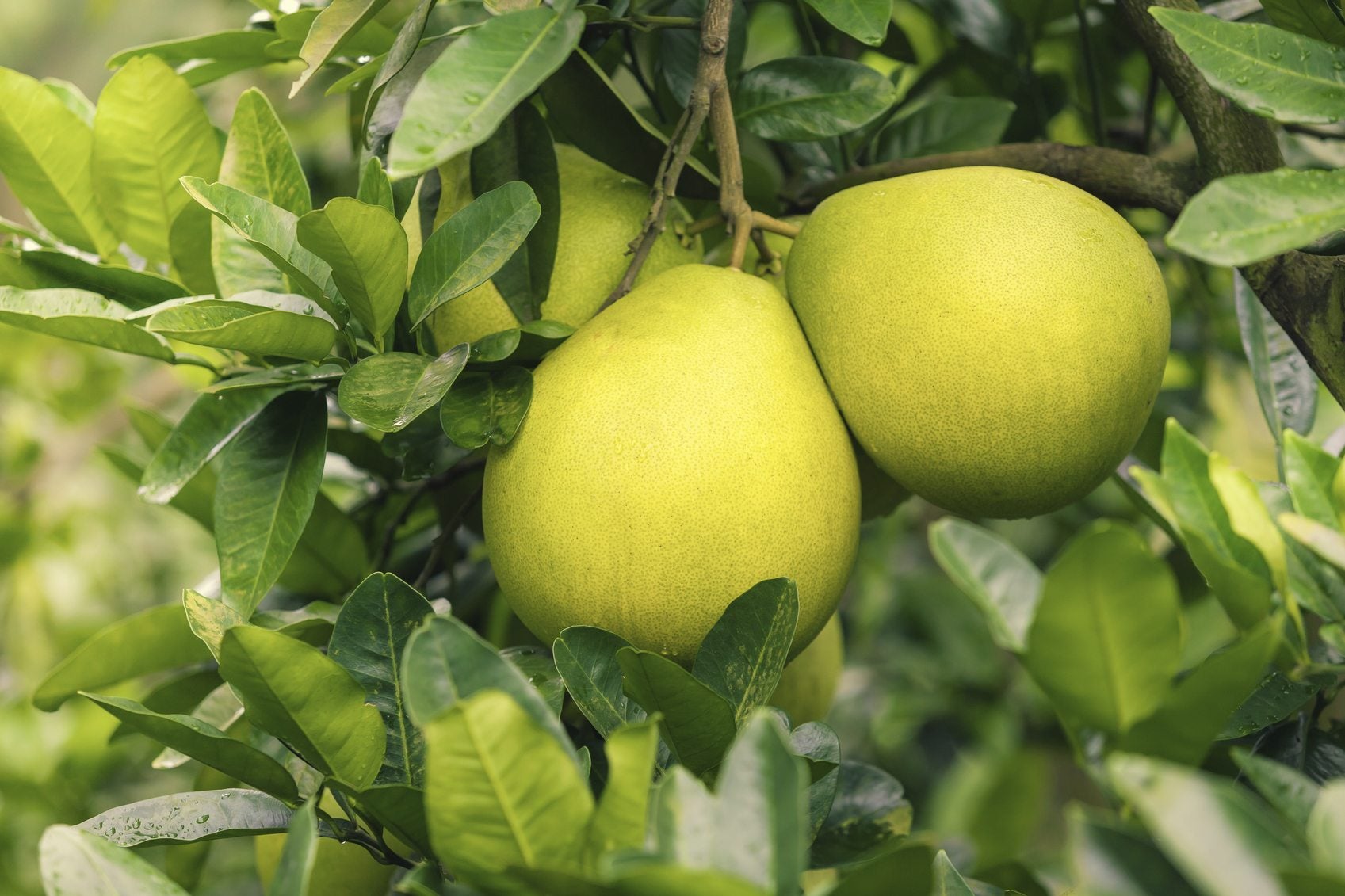
Pomelo or Pummelo, Citrus maxima, may be referred to as either name or even its alternate vernacular name ‘Shaddock.' So what is a pummelo or pomelo? Let's find out about growing a pummelo tree.
Pummelo Tree Growing Information
If you have ever heard of pomelo fruit and actually seen it, you would guess it looks very much like a grapefruit, and rightly so, as it is an ancestor of that citrus. The fruit of a growing pomelo tree is the largest citrus fruit in the world, from 4-12 inches (10-30.5 cm.) across, with a sweet/tart interior covered by a greenish-yellow or pale yellow, easily removable peel, much like other citrus. The skin is fairly thick and, therefore, the fruit keeps for long periods of time. Blemishes on the peel are not indicative of the fruit within. Pomelo trees are native to the Far East, specifically Malaysia, Thailand, and southern China, and can be found growing wild on the river banks in the Fiji and Friendly Islands. It is considered a fruit of good luck in China where most households keep some pomelo fruit during the New Year to symbolize bounty throughout the year. Additional pummelo tree growing information tells us that the first specimen was brought to the New World in the late 17th century, with cultivation beginning in Barbados around 1696. In 1902, the first plants came to the U.S. via Thailand, but the fruit was inferior and, as such, even today, is mostly grown as a curiosity or specimen plant in many landscapes. Pomelos make good screens or espaliers, and with their dense leaf canopy make great shade trees. The pummelo tree itself has a compact, low canopy somewhat rounded or umbrella in shape, with evergreen foliage. The leaves are ovate, glossy, and medium green, while spring flowers are showy, aromatic, and white. In fact, the flowers are so fragrant the scent is used in some perfumes. The resulting fruit is borne off the tree in winter, spring, or summer, depending upon the climate.
Pomelo Tree Care
Pomelo trees can be grown from seed, but bring your patience as the tree will likely not fruit for at least eight years. They can be air layered or grafted onto existing citrus rootstock as well. As with all citrus trees, pummelo trees enjoy full sun, especially hot, rainy climates. Additional pomelo tree care requires not only full sun exposure but also moist soil. Growing pomelo trees are not picky regarding their soil and will thrive equally in clay, loam, or sand with a highly acidic and highly alkaline pH. Regardless of the soil type, provide the pomelo with good drainage and water at least once a week. Keep the area around your pomelo free from debris, grass, and weeds to retard disease and fungus. Fertilize with a citrus fertilizer according to the manufacturer's instructions. Pomelo trees grow 24 inches (61 cm.) per season and can live from 50-150 years and reach a height of 25 feet (7.5 m.). They are Verticillium resistant, but susceptible to the following pests and disease:
- Aphids
- Mealybugs
- Scale
- Spider mites
- Thrips
- Whiteflies
- Brown rot
- Chlorosis
- Crown rot
- Oak root rot
- Phytophthora
- Root rot
- Sooty mold
Despite the long list, most homegrown pomelos do not have many pest issues and won't need a pesticide spray schedule.
Sign up for the Gardening Know How newsletter today and receive a free copy of our e-book "How to Grow Delicious Tomatoes".

Amy Grant has been gardening for 30 years and writing for 15. A professional chef and caterer, Amy's area of expertise is culinary gardening.
